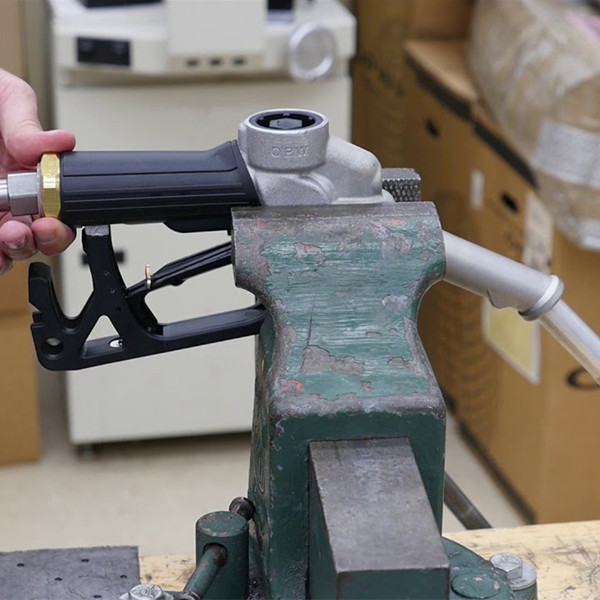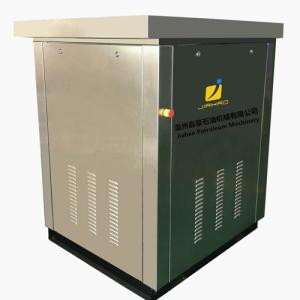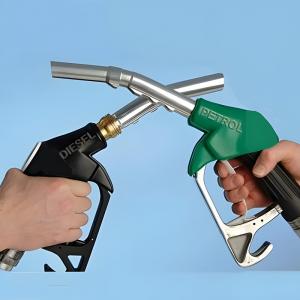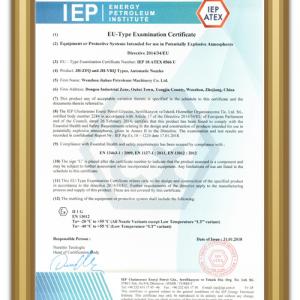Fuel Pump Nozzle Testing Process Standardization
Fuel pump Nozzle Testing Process Standardization
To effectively guarantee the quality of factory-issued Fuel pump nozzles and prevent non-conforming products from being released due to non-standardized testing procedures, we have standardized the fuel pump nozzle testing process.
Pre-Test Procedures
Assembly personnel will neatly arrange assembled products on racks in the awaiting-testing area, facilitating easy transportation by testing personnel. Upon receiving the fuel pump nozzles to be tested, the testing personnel will first verify that the batch aligns with the system records and check for any special requirements.
Initial Testing and First Article Inspection
The tester will then proceed to test various performance parameters of the fuel pump nozzle according to its specific requirements. Once the initial tests are passed, the product inspector will be notified for first article inspection. After the inspector confirms approval, they will sign the first article confirmation on the batch's routing card. Products that pass the test will have their test results recorded and then be placed on the qualified product turnover rack.
In-Process Test Control
Following the first article inspection, testing personnel will conduct batch testing according to inspection standards. For fuel pump nozzles that pass the test, the test results will be recorded, and the products will be placed in the qualified area. Non-conforming products will undergo rework until they meet the standards. After rework and successful re-testing, their results will be recorded, and they will be placed in the qualified area. During the testing process, inspectors will conduct irregular spot checks on the nozzles.
The tester will collect data on the reworked nozzles in the batch and calculate the first pass yield (FPY) for assembly. If the first pass yield falls below 95%, it will be reported to the workshop supervisor. The workshop supervisor will then organize personnel to analyze the issues and implement improvements.
Final Inspection and Warehousing
Upon completion of the batch testing, the tester will notify the inspector for final inspection. The inspector will conduct a sampling inspection of the fuel pump nozzles according to the standards. Once the inspection is passed, the inspector will sign and confirm on the assembly routing card, and the products will then be packaged and sent to the warehouse.

9-Step Fuel Pump Nozzle QC Revolution: Detailed Testing Procedures
Here are the detailed nine steps for the fuel pump nozzle quality control revolution:
1. Resistance Test
Set a digital multimeter to the 200Ω range. Connect the test probes to the nozzle spout and the inlet of the Fuel nozzle, respectively. The resistance between the nozzle spout and the inlet should not exceed 4Ω.
2. Pressure Test
2.1 Nozzle Body Pressure Test:
Conduct a pressure test at 0.53 MPa, maintaining the pressure for 30 seconds. There should be no leakage from the nozzle body.
2.2 Whole Nozzle Pressure Test:
Using a pneumatic pressure testing device, block the outlet of the Fuel nozzle. Open the main valve and introduce 0.1 MPa of compressed air from the inlet of the fuel nozzle. Immerse the fuel nozzle in kerosene for 10 seconds; no bubbles should appear. Close the main valve, open the outlet, and immerse the nozzle in kerosene. Adjust the air pressure to 0.53 MPa and hold for 30 seconds; no bubbles should appear. Repeatedly open and close the main valve, then immerse the outlet in kerosene. No bubbles should be generated from the outlet. Repeat this process 4 times.
3. Operational Performance
Insert the fuel nozzle into the container opening on the test stand. Start fueling at the first speed setting. When the container is full of fuel, observe whether the automatic shut-off nozzle function is sensitive and reliable. Open the container valve, release a small amount of fuel, then close it. When the container is full again, observe whether the automatic shut-off nozzle function is sensitive and reliable. Switch to each speed setting and repeat the above operations. During the operational test, the automatic shut-off nozzle test at each speed setting should be performed no less than 5 times, and the shutting off mechanism at all settings should be sensitive and reliable. The minimum shutting off should meet the requirements in Table 1 (not provided in the original text, but implied). The test for the "no-trip" shutting off function should be no less than 10% of the total tests.
4. Continuous Switching
Insert the fuel nozzle into the container opening on the test stand. Start fueling. When the container is full of fuel, the fuel nozzle should shut off. Pull out the fuel nozzle, wait 3 seconds after it leaves the fuel, then reinsert it into the container opening and start fueling. Observe the shutting off behavior of the fuel nozzle. Repeat this process 5 times. The fuel nozzle should not exhibit any failure to start.

5. Sensitivity
Install the fuel nozzle on the test stand. Power on. Open the large flow rate. Convert the solenoid valve between large and small flow rates continuously 5 times, with a 5-second interval each time. No shutting off should occur.
6. Over-Sensitivity Test
Install the fuel nozzle on the test stand. Power on. Open the large flow rate. No shutting off should occur. The inspector must continuously test each nozzle for 30 seconds, and no shutting off should occur.
7. Quantitative Fueling
During the entire fueling process, the fuel nozzle should not shut off automatically (or "trip"). For a non-pressure automatic shut-off nozzle, after fueling is complete, it must shut off automatically within 40 seconds. After the nozzle is closed, dripping from the nozzle spout should stop continuously within 5 seconds.
8. Orientation Device
Adjust the flow rate to 10 L/min. When the nozzle is lifted and the nozzle spout is inclined upwards by more than 15° from the horizontal, the fuel nozzle should immediately shut off. Repeat this operation 5 times, and in all instances, the nozzle should immediately shut off.
9. Appearance
The markings should be clear, and the color should be uniform without defects.
After the tests are successfully completed, the test results will be recorded, and the fuel pump nozzles will be placed on the qualified product turnover rack. Non-conforming products will be immediately sent for rework.
This comprehensive 9-step quality control process ensures that every fuel pump nozzle leaving the factory meets the highest standards of performance and reliability, ultimately preventing the release of substandard products.





